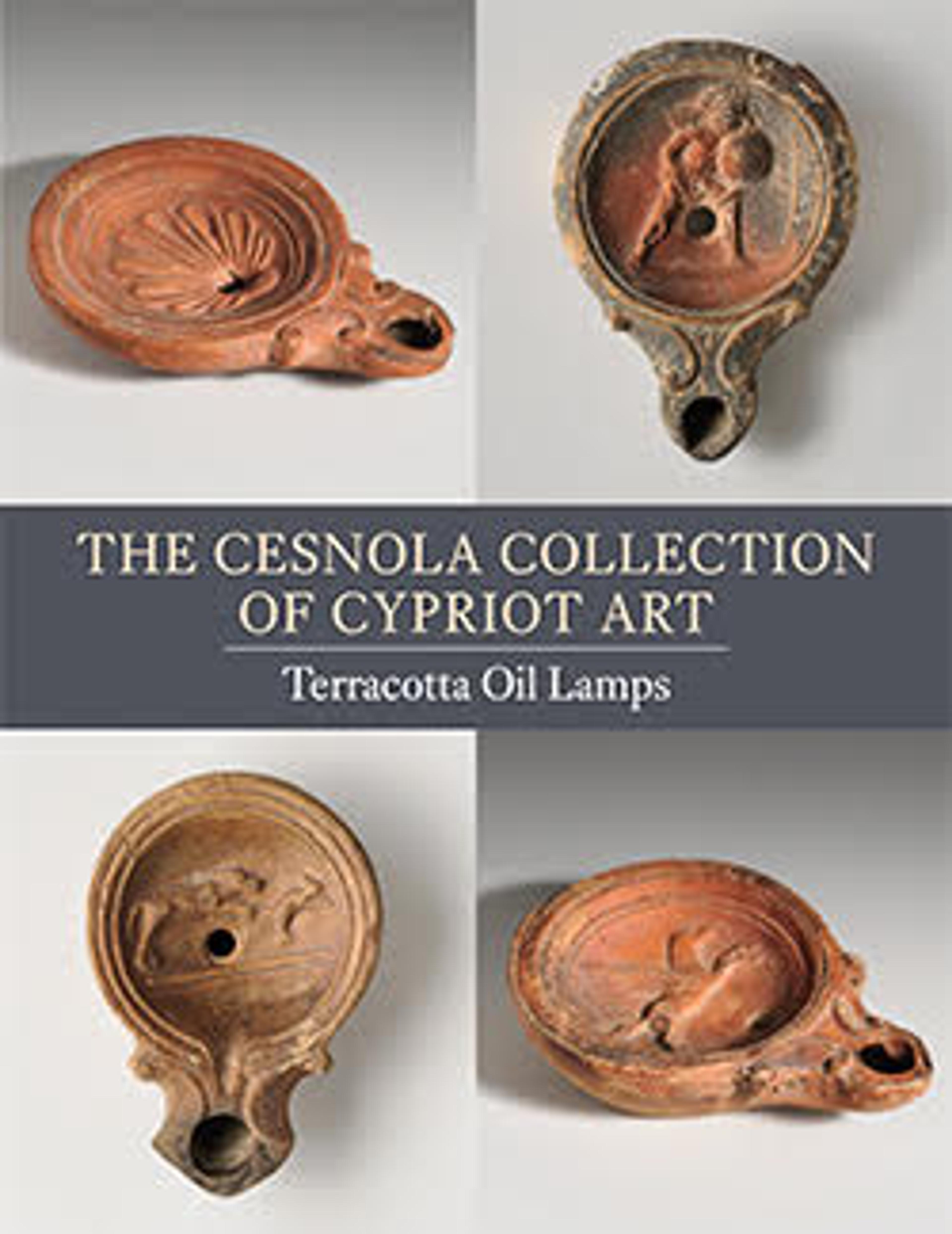Terracotta oil lamp
Loeschcke Type 1A. Mold-made. Discus: a rhinoceros stands, facing right, tossing with its horn a large cat, probably a lion, while a small animal, possibly meant to be a baby rhino, hides in a tree behind and above; a single filling hole below the rhinoceros's belly, with a band of lines and grooves around edge. Volutes flanking angular nozzle. Raised base ring, outlined by two incised circles, and a flat base with the marker's mark impressed across it, reading in Latin: FAVSTI.
Intact.
On the discus a rhinoceros is shown tossing with its horn a large cat, probably a lion, while a small animal, possibly meant to be a baby rhino, hides in a tree behind. The rhinoceros, unknown in the Mediterranean world before Roman times, is only rarely depicted in Roman art and on coins; it is shown, for example, on the Roman mosaic from Lod, Israel. The base is inscribed FAVSTI ([of the lamp maker] Faustus); he seems to have worked in Italy, Egypt, and Petra (Jordan), as well as Cyprus.
Intact.
On the discus a rhinoceros is shown tossing with its horn a large cat, probably a lion, while a small animal, possibly meant to be a baby rhino, hides in a tree behind. The rhinoceros, unknown in the Mediterranean world before Roman times, is only rarely depicted in Roman art and on coins; it is shown, for example, on the Roman mosaic from Lod, Israel. The base is inscribed FAVSTI ([of the lamp maker] Faustus); he seems to have worked in Italy, Egypt, and Petra (Jordan), as well as Cyprus.
Artwork Details
- Title:Terracotta oil lamp
- Period:Early Imperial, Julio-Claudian
- Date:1st half of 1st century CE
- Culture:Roman, Cypriot
- Medium:Terracotta
- Dimensions:Overall: 1 1/8 x 4 in. (2.9 x 10.2 cm)
- Classification:Terracottas
- Credit Line:The Cesnola Collection, Purchased by subscription, 1874–76
- Object Number:74.51.2162
- Curatorial Department: Greek and Roman Art
More Artwork
Research Resources
The Met provides unparalleled resources for research and welcomes an international community of students and scholars. The Met's Open Access API is where creators and researchers can connect to the The Met collection. Open Access data and public domain images are available for unrestricted commercial and noncommercial use without permission or fee.
To request images under copyright and other restrictions, please use this Image Request form.
Feedback
We continue to research and examine historical and cultural context for objects in The Met collection. If you have comments or questions about this object record, please contact us using the form below. The Museum looks forward to receiving your comments.
